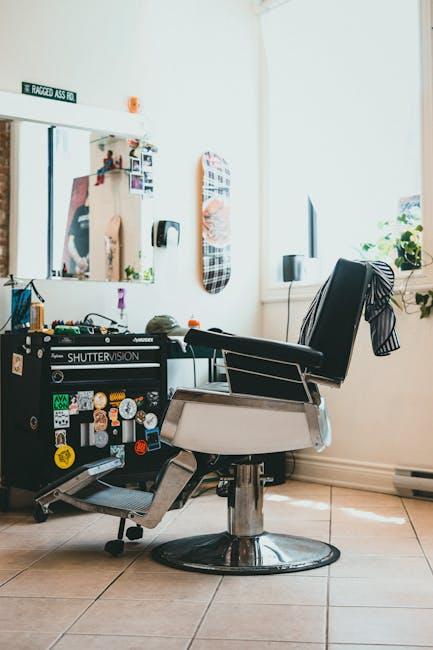In our quest for personal grooming and hygiene, we often overlook the tools that help us achieve our desired look—combs, razors, nail clippers, and more. While these instruments are essential for maintaining our appearance, they can also pose a hidden risk if not properly cared for. Welcome to our exploration of the potential health concerns surrounding grooming tools and their role in spreading diseases. In this article, we’ll delve into how everyday grooming practices might inadvertently contribute to the transmission of infections and provide practical tips on how to safeguard your health. With a warm and informative approach, we aim to equip you with the knowledge needed to maintain not only your style but also your well-being.
Understanding the Risks Associated with Shared Grooming Tools
When it comes to personal grooming, sharing tools like razors, nail clippers, and hairbrushes can pose significant health risks. These everyday items, often overlooked, can become conduits for the transmission of infectious agents. Viruses, bacteria, and fungi are among the microorganisms that can linger on grooming tools, leading to potential infections.
- Skin Infections: Sharing razors or tweezers can cause cuts or abrasions, making it easier for bacteria like Staphylococcus to enter the skin and cause infections.
- Fungal Infections: Hairbrushes and combs can harbor fungal spores, potentially leading to scalp conditions like ringworm.
- Viral Infections: Using the same nail clippers or scissors can spread viruses such as human papillomavirus (HPV), which may cause warts.
To mitigate these risks, it’s crucial to maintain personal grooming tools in a clean and sanitary condition. Regular cleaning with disinfectants, avoiding shared usage, and replacing tools when they show signs of wear are simple yet effective practices to prevent disease transmission.

Identifying Common Diseases Transmitted Through Grooming Equipment
When considering the cleanliness of grooming tools, it’s essential to be aware of certain diseases that can easily hitch a ride on these instruments. Fungal infections, such as ringworm, are particularly notorious for spreading through improperly sanitized grooming equipment. This highly contagious skin condition can quickly transfer from one pet to another, making thorough cleaning and disinfection crucial.
Beyond fungi, bacterial infections like staphylococcus can also find a home on grooming tools. These bacteria thrive in moist environments, making improperly dried brushes and combs potential carriers. Additionally, parasitic infestations such as lice and mites can be transferred through shared grooming items. To protect your pets, ensure that tools are routinely cleaned with appropriate disinfectants and stored in a dry environment. Adopting these practices helps in preventing the spread of these common diseases:
- Fungal infections (e.g., ringworm)
- Bacterial infections (e.g., staphylococcus)
- Parasitic infestations (e.g., lice, mites)

Practical Tips for Safely Sharing Grooming Tools
- Disinfect Regularly: After each use, clean your grooming tools with an appropriate disinfectant. This helps eliminate any lingering bacteria or viruses, ensuring that tools are safe for the next person. Alcohol-based solutions or Barbicide are popular choices.
- Personalize Your Tools: If possible, have a set of grooming tools for each person in your household. This reduces the risk of cross-contamination and ensures everyone has access to clean, safe tools.
- Label and Store Properly: Clearly label personal grooming tools to avoid mix-ups. Store them in a clean, dry place, preferably in a case or pouch, to keep them protected from dust and moisture.
- Avoid Sharing at Salons: If you’re visiting a salon, don’t hesitate to ask about their sanitation practices. Reputable salons will always be willing to explain their hygiene protocols and may even allow you to bring your own tools.
- Educate and Communicate: Make sure everyone in your home understands the importance of not sharing personal grooming tools. Open communication about hygiene can foster a healthier environment for all.

Choosing the Right Disinfectants to Prevent Disease Spread
When it comes to maintaining hygiene in grooming environments, selecting the right disinfectants is crucial. Grooming tools, often used on multiple clients, can be a conduit for disease transmission if not properly sanitized. To effectively prevent the spread of pathogens, consider these factors:
- Type of Pathogens: Understand which viruses, bacteria, or fungi are prevalent in your environment. Choose disinfectants specifically designed to combat these microorganisms.
- Tool Material: Different materials react differently to chemical agents. Ensure the disinfectant is suitable for the materials of your grooming tools to avoid damage.
- Contact Time: Pay attention to the recommended contact time for the disinfectant to ensure efficacy. Some pathogens require longer exposure to the active ingredients to be effectively neutralized.
- Safety: Opt for products that are safe for both the user and the environment. Check for non-toxic, eco-friendly options that are free from harmful chemicals.
Incorporating these considerations into your sanitation routine not only safeguards health but also instills confidence in clients, reassuring them of your commitment to their well-being.

